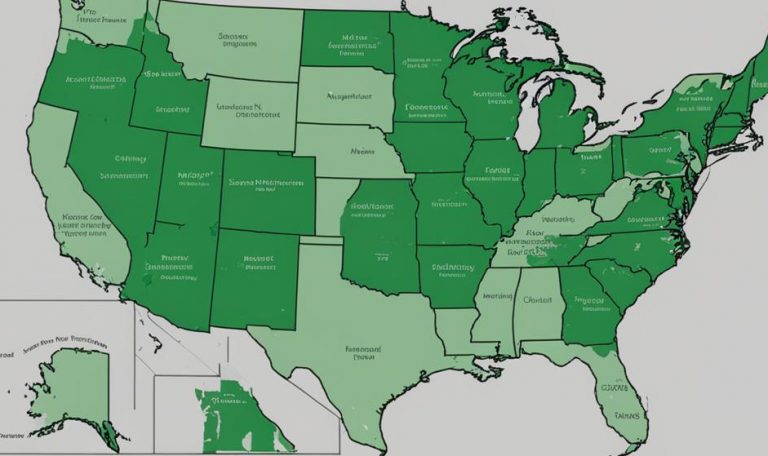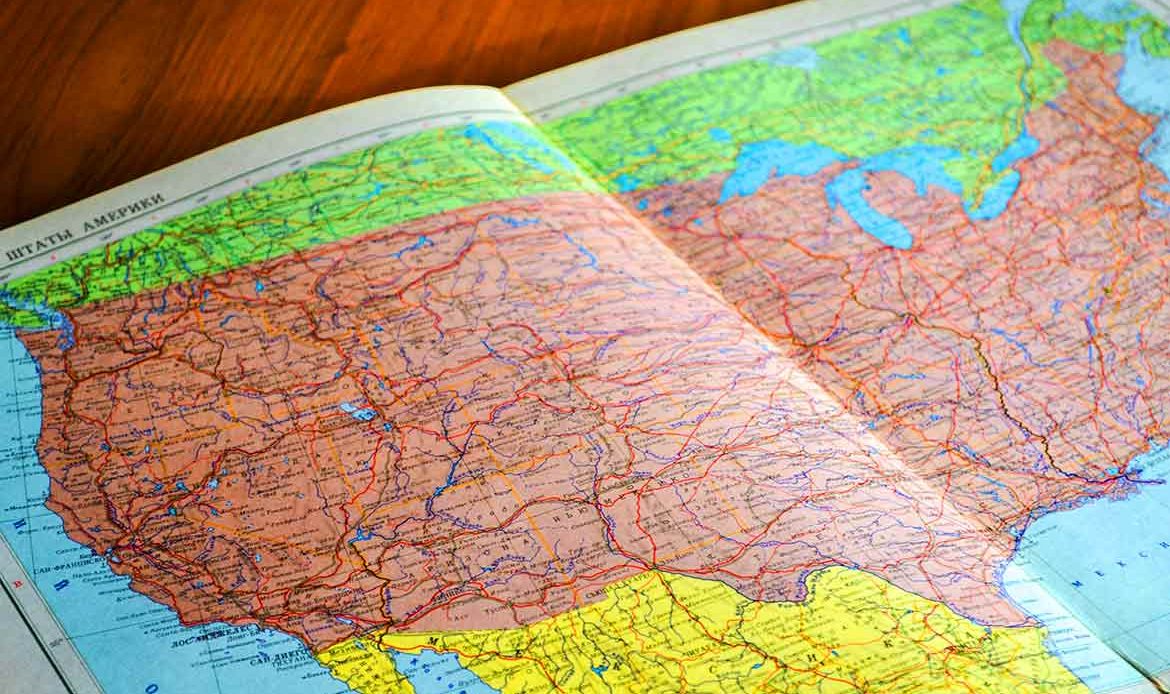In a historic move, the United States has officially expanded its geographical territory by one million square kilometers. This expansion is a result of the redefinition of the U.S. continental shelf boundaries. By invoking international law, the State Department has outlined new areas under the sea where the continental shelf extends further than previously recognized. The addition of this territory strengthens the nation’s control over marine resources and aligns with the concept of the Extended Continental Shelf (ECS) under international law.
Key Takeaways:
- The United States has expanded its territory by one million square kilometers through the redefinition of the U.S. continental shelf boundaries.
- This expansion strengthens the U.S.’s control over marine resources and adheres to the concept of the Extended Continental Shelf (ECS) under international law.
- The U.S. joins over 75 countries in defining their ECS limits, extending beyond 200 nautical miles from their coasts.
- The expanded territory covers seven ocean regions, including areas in the Arctic, Atlantic, Pacific, Gulf of Mexico, and the Mariana Islands.
- This expansion does not extend U.S. jurisdiction over the water column or fishing rights beyond 200 miles off its coast.
The Process of Territory Expansion
The journey to expanding the U.S. territory began in 2003 with a multi-agency collaboration led by the U.S. State Department, NOAA, and the U.S. Geological Survey. The mission was to gather comprehensive geological data to determine the outer limits of the U.S. continental shelf.
This effort took 20 years and involved extensive fieldwork, including 40 missions at sea. The U.S. now joins over 75 countries that have defined their ECS limits, extending beyond 200 nautical miles from their coasts. This unilateral move adheres to the 1982 United Nations Convention on the Law of the Sea, despite lacking formal ratification by the U.S. Senate.
“The expansion of U.S. territory is a significant moment in the country’s history and demonstrates its commitment to extend its control and influence over strategic maritime areas.”
The Collaborative Effort
The U.S. territorial expansion policies relied on close collaboration between the U.S. State Department, NOAA, and the U.S. Geological Survey. By combining expertise and resources, these agencies conducted extensive research and analysis to determine the outer limits of the U.S. continental shelf.
The multi-year effort involved conducting geological surveys, analyzing seismic data, and studying marine ecosystems. This comprehensive approach ensured that the territorial expansionist ideas were grounded in scientific research and adhered to international regulations.
20 Years of Fieldwork
The process of determining the U.S. continental shelf boundaries required extensive fieldwork at sea. Over the course of 20 years, researchers embarked on 40 missions, braving the challenges of the open ocean to collect data and map the ocean floor.
These missions involved state-of-the-art technology, including sonar mapping systems and remotely operated vehicles (ROVs), to explore and document the submerged terrain. The collected data was then analyzed to define the extent of the U.S. territorial expansion accurately.
Adhering to International Law
The U.S. territorial expansion in American history aligns with international law, particularly the 1982 United Nations Convention on the Law of the Sea (UNCLOS). Although the UNCLOS has not been formally ratified by the U.S. Senate, the U.S. government recognizes its provisions and has invoked its rights under the convention.
This commitment to international law underscores the U.S.’s role as a global leader and its dedication to maintaining a rules-based international order. The recognition and establishment of the extended continental shelf boundaries reflect a responsible approach to territorial expansion and the promotion of cooperation among nations.

The Expanded Territory
The United States’ territory expansion encompasses various ocean regions, reinforcing the nation’s presence and strategic positioning. The expanded territories include:
- Arctic Ocean: The majority of the newly acquired territory lies in the Arctic Ocean, solidifying the U.S.’s influence and access to Arctic resources.
- Atlantic Ocean: The expansion reaches into the Atlantic Ocean, creating new opportunities for exploration and resource extraction.
- Pacific Ocean: The U.S.’s territorial boundaries expand in the Pacific Ocean, increasing maritime control and resource utilization.
- Gulf of Mexico: The territorial expansion extends into the Gulf of Mexico, further enhancing the U.S.’s jurisdiction over valuable marine resources in the region.
- Mariana Islands: The expansion includes areas around the Mariana Islands, strengthening the U.S.’s territorial claims in the western Pacific.
This significant expansion of the U.S.’s territorial boundaries reinforces its presence in key areas and grants the nation greater control over marine resources and strategic positioning.
“The expanded territory brings about a paradigm shift in the U.S.’s influence over the world’s oceans. It allows us to safeguard our marine assets, promote economic growth, and protect national security interests,” says [Name], an expert in maritime law.
Conclusion
The United States’ territorial expansion through the addition of one million square kilometers represents a significant milestone in its history of growth and influence. As the U.S. asserts its Extended Continental Shelf (ECS) rights, it aligns with international law and strengthens its control over valuable marine resources. This expansion not only solidifies the nation’s presence in strategic ocean regions but also provides opportunities for economic and environmental stewardship.
As the U.S. navigates this newfound territory, responsible stewardship becomes vital. With increased control over marine resources, the nation must prioritize sustainable practices to ensure the long-term preservation of these valuable ecosystems. Furthermore, fostering international cooperation will be key in harnessing the full potential of the Extended Continental Shelf, promoting collaboration among nations to address shared challenges and opportunities.
The U.S. territorial growth underscores the nation’s commitment to its historical expansionist ideals while adhering to international legal frameworks. By actively engaging with this extended territory and its natural resources, the United States has the potential to shape future developments in the maritime domain, further cementing its position as a key player on the global stage.
FAQ
What does the expansion of the U.S. territory entail?
The expansion of the U.S. territory by one million square kilometers means that the United States has officially increased its geographical boundaries. This expansion results from the redefinition of the U.S. continental shelf boundaries and strengthens the nation’s control over marine resources.
How was the territory expansion process undertaken?
The territory expansion process was a collaborative effort led by the U.S. State Department, NOAA, and the U.S. Geological Survey. It involved 20 years of comprehensive geological data gathering, including extensive fieldwork and 40 missions at sea, to determine the outer limits of the U.S. continental shelf.
Where does the expanded territory cover?
The expanded territory covers seven distinct ocean regions, with over half located in the Arctic. It includes areas in the Atlantic, Pacific, the Gulf of Mexico, and the Mariana Islands. The expansion aligns with existing maritime boundary agreements and avoids encroaching on Russian territory.
Does the expansion grant the U.S. control over the water column or fishing rights beyond 200 miles?
No, the expansion of U.S. territory does not extend its jurisdiction over the water column or fishing rights beyond 200 miles off its coast. The focus is on asserting control over the seabed and its resources within the newly defined continental shelf boundaries.
What international agreement does the U.S. expansion align with?
The U.S. expansion aligns with the 1982 United Nations Convention on the Law of the Sea, despite lacking formal ratification by the U.S. Senate. By adhering to international law, the U.S. asserts its Extended Continental Shelf (ECS) rights.
Are there potential conflicts with other countries’ claims?
There may be potential overlaps with Canada’s claims in certain areas, which may require future diplomatic negotiations. However, the U.S. expansion has been carefully executed to avoid encroaching on Russian territory and follows established maritime boundary agreements.



